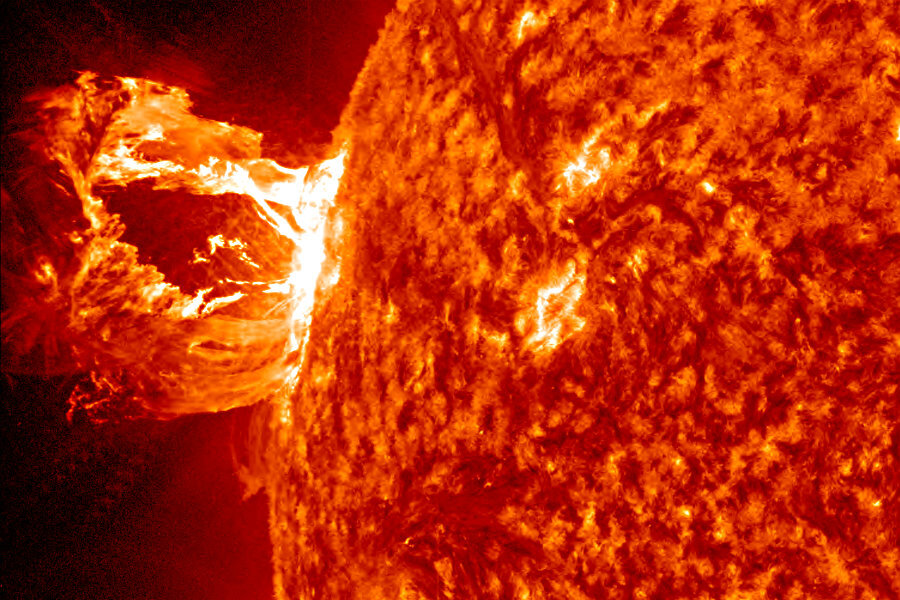Spectacular comet suicide: Does that happen often?
Loading...
Between Wednesday and Thursday this week, astronomers at NASA’s Solar and Heliospheric Observatory (SOHO) noticed something special - a comet in close proximity to the sun.
And then it was gone.
Astronomers watched as the comet plunged towards the sun, where it was rapidly devoured by solar forces. Comet suicides aren’t necessarily the result of a direct impact with the sun, but typically occur when a comet passes too close to the sun to withstand the sun's gravitational forces and heat, and disintegrates.
"This comet didn't fall into the sun, but rather whipped around it – or at least, it would have if it had survived its journey," said Sarah Frazier of NASA's Goddard Space Flight Center in Greenbelt, Maryland, according to Space.com. "Like most sungrazing comets, this comet was torn apart and vaporized by the intense forces near the sun."
The comet, first noticed by SOHO on August 1, was speeding at approximately 1.3 million miles per hour as it plummeted towards the sun, according to Dr. Frazier. It was part of the Kreutz comets, a group of comets with similar 800 year orbits, all of which broke off from a larger comet hundreds of years ago.
"SOHO is seeing fragments from the gradual breakup of a great comet, perhaps the one that the Greek astronomer Ephorus saw in 372 BC," Dr. Brian Marsden of the Center for Astrophysics in Cambridge, Mass., told NASA in 2000. "Ephorus reported that the comet split in two. They split again and again, producing the sungrazer family, all still coming from the same direction."
Scientists believe that the original comet may have produced as many as 20,000 fragments. The comet fragments were named after German astronomer Heinrich Kreutz, who first theorized that the pieces were originally part of the same comet.
Other Kreutz comets have met a similar fate, enough that these diving comets have a special name. Astronomers call them "Kreutz sungrazers" for the way they touch the sun. Most are never noticed, but some, like this week’s, make a splash.
Astronomers were enthusiastic about the event.
"This is one of the brightest Kreutz sungrazers we've seen over the past 21 yrs,” tweeted astronomer Karl Battams. “Awesome!"
Although they are all celestial bodies, comets differ from their cousins, meteors and asteroids in several ways.
While comets are made of ice and rock, and typically have elliptical orbits that can swing them far into the outer reaches of the solar system, asteroids are large and are made primarily of rock and metal. Some asteroids also have eliptical orbits, but these orbits typically cross paths with inner planets such as Earth, Venus, and Mars.
Like asteroids, meteors are conglomerations of materials, including gas, rock, and dust that orbit the sun. When they burn up in Earth’s atmosphere, they leave behind a light trail that's often dubbed a "shooting star."
SOHO has witnessed thousands of sungrazers, including a similarly bright comet that passed too close to the sun in 2010. According to NASA, the observatory is the most successful comet hunter in history.






